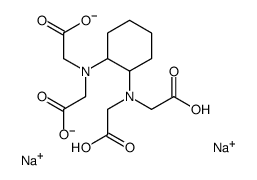Direct magnetic resonance evidence for peroxymonocarbonate involvement in the cu,zn-superoxide dismutase peroxidase catalytic cycle.
Marcelo G Bonini, Scott A Gabel, Kalina Ranguelova, Krisztian Stadler, Eugene F Derose, Robert E London, Ronald P Mason
文献索引:J. Biol. Chem. 284(21) , 14618-27, (2009)
全文:HTML全文
摘要
Cu,Zn-superoxide dismutase (SOD1) is a copper- and zinc-dependent enzyme. The main function of SOD1 is believed to be the scavenging and detoxification of superoxide radicals. Nevertheless, the last 30 years have seen a rapid accumulation of evidence indicating that SOD1 may also act as a peroxidase, an alternative function that was implicated in the onset and progression of familial amyotrophic lateral sclerosis. Although SOD1 peroxidase activity and its dependence on carbon dioxide have been well described, the molecular basis of the SOD1 peroxidase cycle remains obscure, because none of the proposed catalytic intermediates have so far been identified. In view of recent observations, we hypothesized that the SOD1 peroxidase cycle relies on two steps: 1) reduction of SOD-Cu(II) by hydrogen peroxide followed by 2) oxidation of SOD-Cu(I) by peroxymonocarbonate, the product of the spontaneous reaction of bicarbonate with hydrogen peroxide, to produce SOD-Cu(II) and carbonate radical anion. This hypothesis has been investigated through electron paramagnetic resonance and nuclear magnetic resonance to provide direct evidence for a peroxycarbonate-driven, SOD1-catalyzed carbonate radical production. The results gathered herein indicate that peroxymonocarbonate (HOOCO(2)(-)) is a key intermediate in the SOD1 peroxidase cycle and identify this species as the precursor of carbonate radical anions.
相关化合物
| 结构式 | 名称/CAS号 | 分子式 | 全部文献 |
|---|---|---|---|
 |
DCTA 钠盐
CAS:5786-78-7 |
C14H20N2Na2O8 |
|
Determination of synthetic ferric chelates used as fertilize...
2007-01-01 [J. Am. Soc. Mass Spectrom. 18(1) , 37-47, (2007)] |
|
Capillary electrophoretic-ultraviolet method for the separat...
2007-01-01 [J. AOAC Int. 90(3) , 834-7, (2007)] |
|
Detailed spectroscopic, thermodynamic, and kinetic studies o...
2009-08-17 [Inorg. Chem. 48(16) , 7864-84, (2009)] |
|
Kinetic studies on the oxidation of cytochrome b(5) Phe35 mu...
2002-04-01 [J. Biol. Inorg. Chem. 7(4-5) , 375-83, (2002)] |
|
Improving sensitivity in simultaneous determination of coppe...
2006-03-31 [J. Chromatogr. A. 1110(1-2) , 261-7, (2006)] |